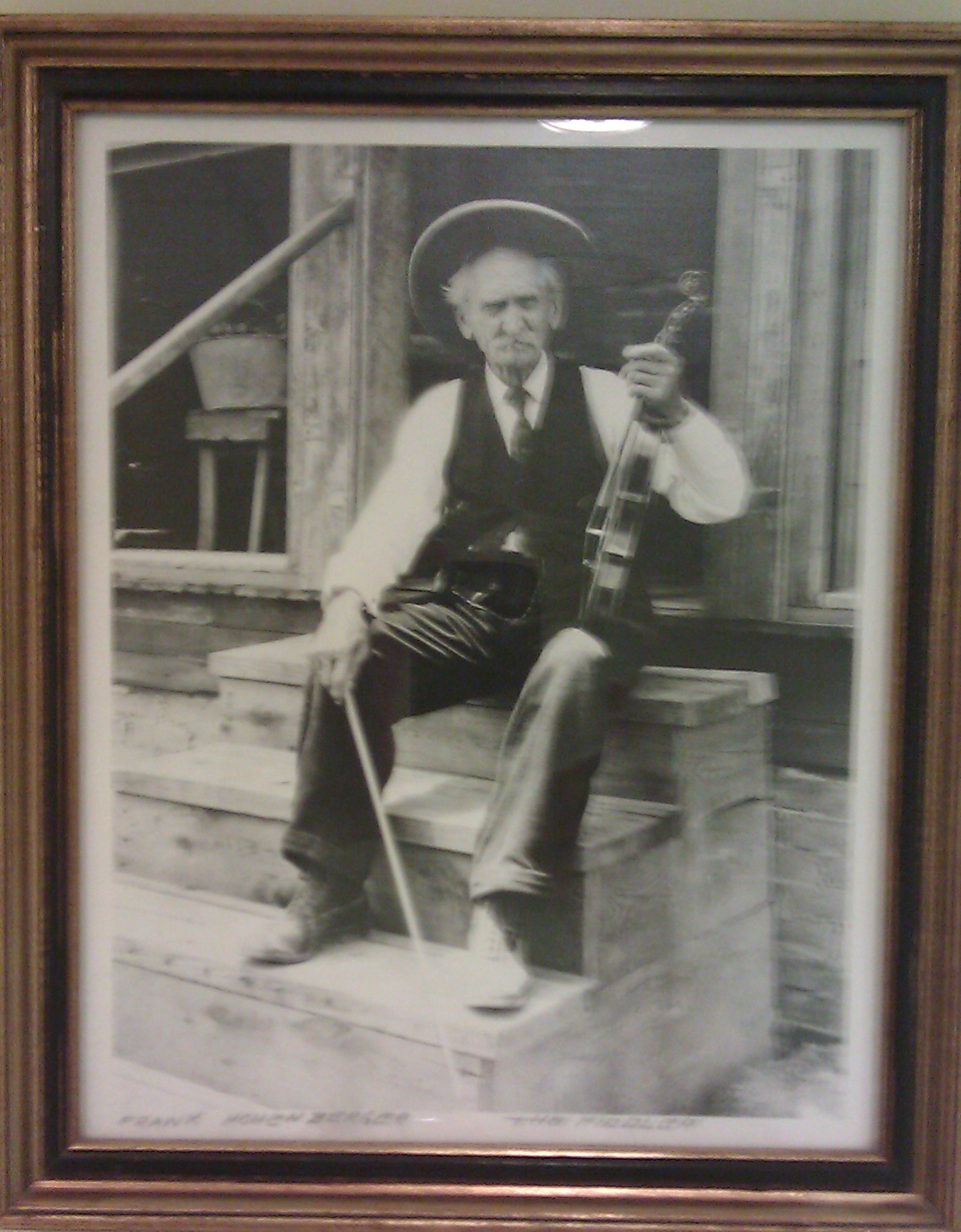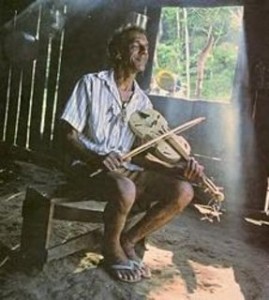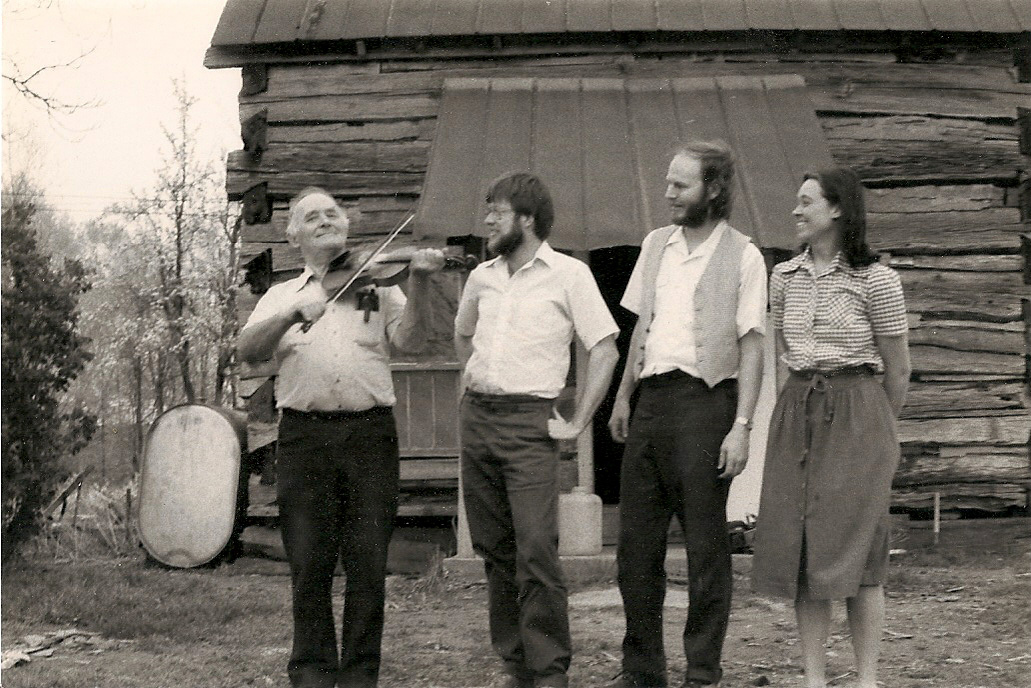A few days ago I had a moment of pure joy. While digitally surfing through my music collection I landed on a recording I made in 2012 of an improbable and memorable music party at Estonia House in Riverwoods, a village in Lake County, just north of Chicago. The musical performances that day were a bit rough at times, as the jam featured players from four countries and several different musical traditions. Nevertheless, while listening to it all 13 years later, the aural elation produced by the assembly was profound and infectious. In our current chaos, I willingly surrendered to the joy and let my heart be refreshed.
I was moved to share this instance of joy long after the fact for three reasons. First, there were moments of melodic and harmonic convergence that are just too good to keep to myself. Secondly, the array of humans that made up this gathering have all made immense contributions to my life. To tell these stories is a small effort at showing my appreciation for their friendship. And finally, it delights me to think of how our chains of relationships contribute to building more expansive and inclusive community.
I will start and end with Andres Peekna, but that means that I must also quickly bring in Mary Allsopp, who introduced me to Andres. Born in Tallinn, Estonia in 1937, Andres Peekna was a leading force in the establishment of Estonia House, a community cultural center serving Baltic immigrants now living in greater Chicagoland.
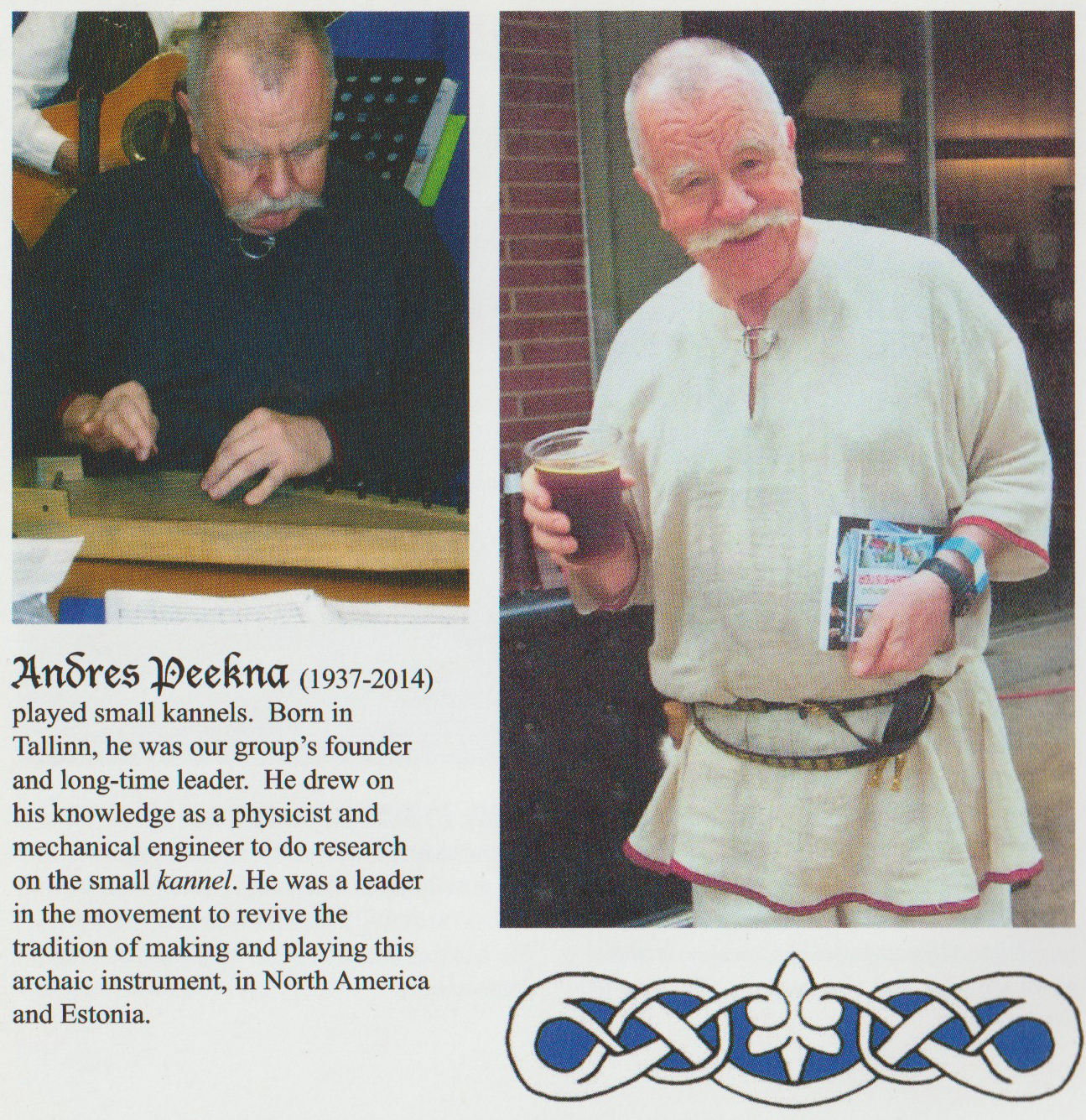
Andres himself was displaced as a child by the Nazi German takeover of Eesti and the subsequent Soviet occupation. Andres grew up in North America and became a highly educated citizen—a physicist—whose intellectual curiosity turned to the traditional folk music of his homeland, particularly to the construction and playing of the small kannel, a plucked zither with 6, 9, or 12 strings.
Mary Allsopp, an avid student of traditional Nordic fiddle styles and and an accomplished player of Swedish polskas, ended up in the band that Andres assembled: Tuuletargad, the Wind Wizards. I had met Mary through her involvement with Pickled Herrings, a local Swedish ensemble, and was becoming increasingly entranced with Swedish fiddle tunes through our annual meetups at the University of Chicago Folk Festival. In the early 2000 aughts, the academic side of me was teaching a college ethnomusicology class on Ethnic Music in Chicago Neighborhoods, when, in a used bookstore, I picked up an affordable copy of the US and Canadian volume of the Garland Encyclopedia of World Music. I found Mary’s name in the track listings for the accompanying CD, which included a cut from Tuuletargad’s first album.
At the same time, the community music side of me had started a fiddle contest at the Old Town School of Folk Music’s summer festival, Folk & Roots. For the second contest in 2004 I made an effort to invite fiddlers and musicians from other traditions to participate, so that this event could better represent the Midwest’s people. Mary Allsopp entered with a late manifestation of Pickled Herrings. She also convinced Andres to come to Lincoln Square from his home in Waterford, Wisconsin. They played two Eesti tunes in our 2nd Midwest Fiddle Championship. Here is one of them.
Vigala Reinlander: Played by Andres Peekna on kannel with Mary Allsopp & Diane London on fiddles. Midwest Fiddle Championship at the 2004 Chicago Folk & Roots Festival. The first round was held in Giddings Plaza in Lincoln Square on the night before the festival.
That is where I first met Andres Peekna. I will tell more of our story at the end of this narrative. To bring us back to that wonderful night of September 23, 2012, the Estonia House had booked a concert by Hohka, a touring band of young musicians from Finland. Mary Allsopp had told me about their upcoming concert and the jam to follow. Andres had assured her that he could keep Estonia House open for a private party for local Nordic music enthusiasts. Members of Mary’s main band, Chicago Spelmanslag, would stay after the concert to play tunes with Hohka.

This was in the beginning stages of my friendships with many of these ‘Lag members. The year before, Mary had invited me to be her co-teacher at a monthly ScandiJam she had started at the Swedish-American Museum on Chicago’s north side. (My invitation to teach was based on my recent trip to Finland and my family’s hosting of Arto Järvelä during his month long residency at the Old Town School of Folk Music in 2009.) Alas, in spite of these burgeoning friendships, I could not attend the Estonia House concert.
And here is where the story—and the subsequent jam session—reaches a higher level of intensity. The reason I could not attend the concert in Riverwoods is because the Chicago World Music Festival was offering that very same afternoon the first of two performances by JPP, perhaps the top band on the Finnish folk music scene. JPP featured the fiddling of my dear friend Arto Järvelä (and that is a story that deserves its own telling). I fully intended to catch both of their performances on Navy Pier on Chicago’s lakefront. Fellow ScandiJammers told me they would attend the JPP concert scheduled for the following Monday.
But, they said, “You should bring Arto up to Estonia House for the post-concert music party.” It turned out that Arto was happy to go with me to Riverwoods. Tim Anderson of the ‘Lag had already invited him. And joining our trek were fellow JPPers Uncle Mauno Järvelä and cousin Antti Järvelä. With all the car seats filled, my daughter Maddy, still in high school, had to ride in the ‘way back.’ The Finnish contingent piloted, as they had brought a GPS device to guide them on their North American tour. But first we had to stop at my house to pick up my fiddle and Maddy’s guitar.
When we reached Estonia House, the jam was in full swing. The addition of five more players, three of whom were masters, took it up several notches.
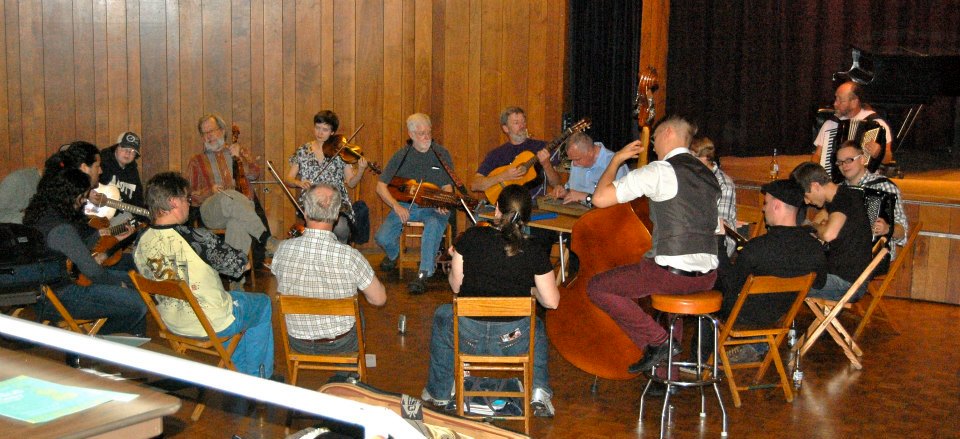
I found a seat next to Hohka’s fiddle player. She introduced herself as Meriheini and said she had been Arto’s student in the folk music course at the Sibelius Academy in Helsinki. This night was just a month before my departure for Helsinki (Arto’s doing) to do a two-week teaching residency at the Sibelius. I said I hoped we could meet up again when I was in Helsinki. Sadly, that did not happen.
3 early tunes from the Estonia House Jam
- 1. Hungarian Railroad (From the repertoire of the Chicago Spelmanslag.)
- 2. Arvon Alotus (A wedding march from Finland, led by Meriheini Luoto & Arto Järvelä.)
- 3. Minuet after Matti Haudenma (Led by Arto, this is a tune I learned in Finland in 2009 and retaught to the Chicago Scandijam just this month).
I would have several meetings a month later in Helsinki with Antti Järvelä. One meeting of great importance was another momentous jam session at a bar called Musta Kissa (Black Cat). A favorite tune I would learn at the Black Cat, that I would later teach, was played that September night by musicians seated right next to me at Estonia House. I did not make that connection until just this month (see below).
When we left Navy Pier, I had extended an invitation to the Estonia House music party to two other friends of Arto and dear friends of mine: Maria McCullough and Yahvi Pichardo. The three of us had been playing together in the Fantastic Toe Trippers Orchestra. We billed ourselves as a band that played polkas and waltzes from three continents. My times with these two lovely people are deeply cherished memories brought fully alive by listening to my recording of that night in 2012. I mourn the fact that our separate paths have put us great distances apart. My love for each of them endures.
Yahvi and Maria showed up shortly after my car full of Jarveläs and Tylers. They brought with them a young jarana-playing friend from Chicago’s Mexican folk music scene. I am sorry that I cannot remember his name. Their addition—particularly Yahvi’s mastery of guitar rhythms—was a further boost to the energy of the Estonia House jam.
3 later tunes from the Estonia House jam
- 1. Kari Trestak * (A Norwegian reinlander that I would learn from a month later from Vidar Skrede & Antti Järvelä at Musta Kissa in Helsinki.)
- 2. Purple Lillies Polka / La Cirerita (A medley put together by the Fantastic Toe Trippers of a Tohona O’odham polka from Arizona and a song from Mexico and Spain.)
- 3. Kostner Avenue Waltz (A tune composed by Arto Järvelä during his Old Town School residency in 2009.)
As promised, I will close this narrative by returning to Andres Peekna, who raided the Estonia House bar that night for beers for all of us musicians. Some time after we first met in 2004, Andres and I became friends on social media where we frequently debated issues of politics, history, and culture. He was a worthy opponent, decidedly not aligned to any ideology, but someone with whom I shared basic values and a vision for a humane future for our society.
Somehow on that night in 2012, I became a member of Tuuletargad, the Estonian Instrumental Folk Music Ensemble of Chicago. Whether I inquired first or he invited me I cannot remember. But at the handful of performances I did with the Wind Wizards, he always announced with some pride that I was a professional fiddler.

Kilpalaulunta (Song Duel): Played by Andres Peekna on 12-string kannel with Ain Haas on a 9-string Nerevsk gusli (a plucked lyre) from Russia. From the CD Tuuletargad 2.
Tuuletargad was in the process of recording a second CD in 2014, when Andres passed away very suddenly on Thanksgiving Day. His long-time friend and fellow Estonian, Ain Haas, continued the recording project by driving up from Indianapolis on multiple occasions for rehearsals at Mart Jalakas’s lake front apartment or at Andres home in Wisconsin. Tuuletargad 2 was released in 2016. According to some reports, it is one of the best-selling traditional folk music albums in Tallinn (or at least in the classical music record store located in the Old Town section of Estonia’s capital city).
2 tunes from Tuuletargad 2
- 1. Nyykytys [Karelian] – with bowed lyre (jiukannel) and Estonian bagpipes (torupill) played by Ain Hass.
- 2. Tackleiken / Vengerka [Dance of Thanks / Hungarian Dance]
If my memory serves me well, I returned to Estonia House the next summer as the Wind Wizards performed for their annual festival. In January 2015, we played there again for a memorial service for Andres. Ain Haas, who has also become a valued friend, has kept the band going, getting us together for occasional appearances at Estonia House, usually for the craft bazaar in November. I was just there a few months ago.
It is good to remember past joys and the people with whom we created and shared that happiness.
Paul Tyler (DrDosido) – convener
Fiddle Club of the World (Chicago Chapter)
____
* A serendipitous footnote is that Vidar Skrede taught us Kari Trestak (see above) at his visit to Fiddle Club of the World a year later. I taught it several times at the Old Town School of Folk Music, even to a banjo class. We played it for a while at ScandiJam. It might be time to teach it again to the current generation of players.




